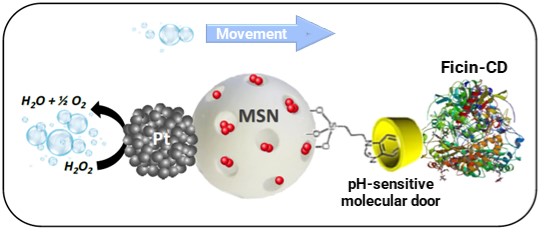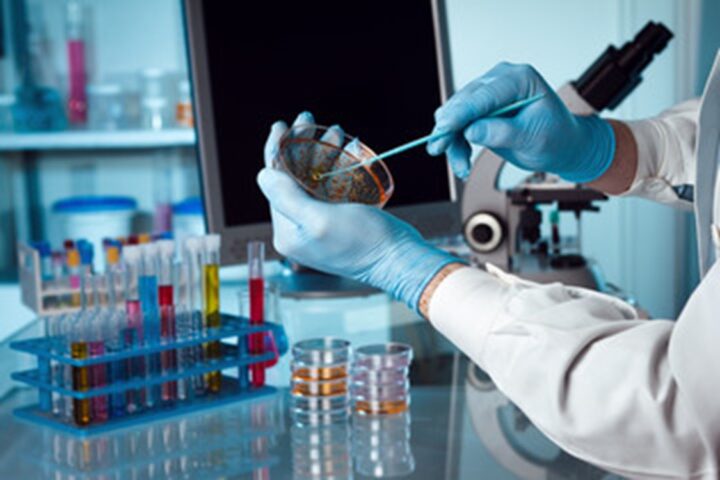Although, at the moment, most acute bacterial infections have been eradicated thanks to the development of antibiotics and vaccines, chronic infections still represent a problem with very few available solutions. In most chronic infections, bacteria grow attached to different surfaces creating biofilms. These biofilms do not respond to antibiotics since they are protected by the biofilm matrix, thus creating a need for new innovative solutions that allow the treatment of these structures.
Researchers from the Foundation for the Promotion of Health and Biomedical Research (FISABIO) and the Interuniversity Research Institute for Molecular Recognition and Technological Development (IDM) have developed a self-propelled nanomotor as an innovative solution to treat chronic microbial infections that form biofilms.
The nanomotor, Janus Pt-MSNs type, consists mainly of two components:
• A mesoporous layer that acts as a nanocontainer for the controlled delivery of the antimicrobial or compound of interest (for example an antibiotic or an antiseptic such as chlorhexidine). The release of the contents is regulated by a pH-sensitive molecular door.
• A platinum layer, responsible for the self-propulsion of the device thanks to the formation of oxygen bubbles through the degradation of hydrogen peroxide. Platinum acts as a catalyst for this reaction, allowing the nanomotor to self-propel in a certain direction.
Furthermore, these nanomotors are able to target the biofilm structure, thanks to the proteolytic activity of a specific enzyme linked to the system that degrades the biofilm’s protein matrix. This enzyme’s activity is enhanced due to the movement of the nanomotor.

The nanomotor system has been tested in an in vitro biofilm of Staphylococcus aureus with successful results, being able to eliminate the preformed biofilm in more than a 75%. In addition, the synergic effect of the controlled delivery and the nanomotor’s self-propulsion enhances the therapeutic efficiency of the system, obtaining an infectious cell reduction of up to 90% when compared to the control group.
Benefits:
- Versatile technology that can be used for the encapsulation and delivery of several molecules, proven to be effective against endodontic bacterial infections, against Staphylococcal biofilms and potentially against fungal infections through its topical use.
- Synergic effect, targeting at the same time the infectious agent and the biofilm components.
- Cost-effective technology, allowing the reduction of the biomolecule dose used thanks to the directed delivery.
- Innovative solution, being able to reduce significantly the biofilm
The represented institution is looking for a collaboration that leads to commercial exploitation of the presented invention.
Institution: Instituto de Reconocimiento Molecular y Desarrollo Tecnológico (IDM), Fundación para el Fomento de la Investigación Sanitaria y Biomédica de la Comunitat Valenciana (FISABIO)
TRL: 3-4
Protection status: Spanish Patent Application
Contact: Noelia Mas / noelia@viromii.com

